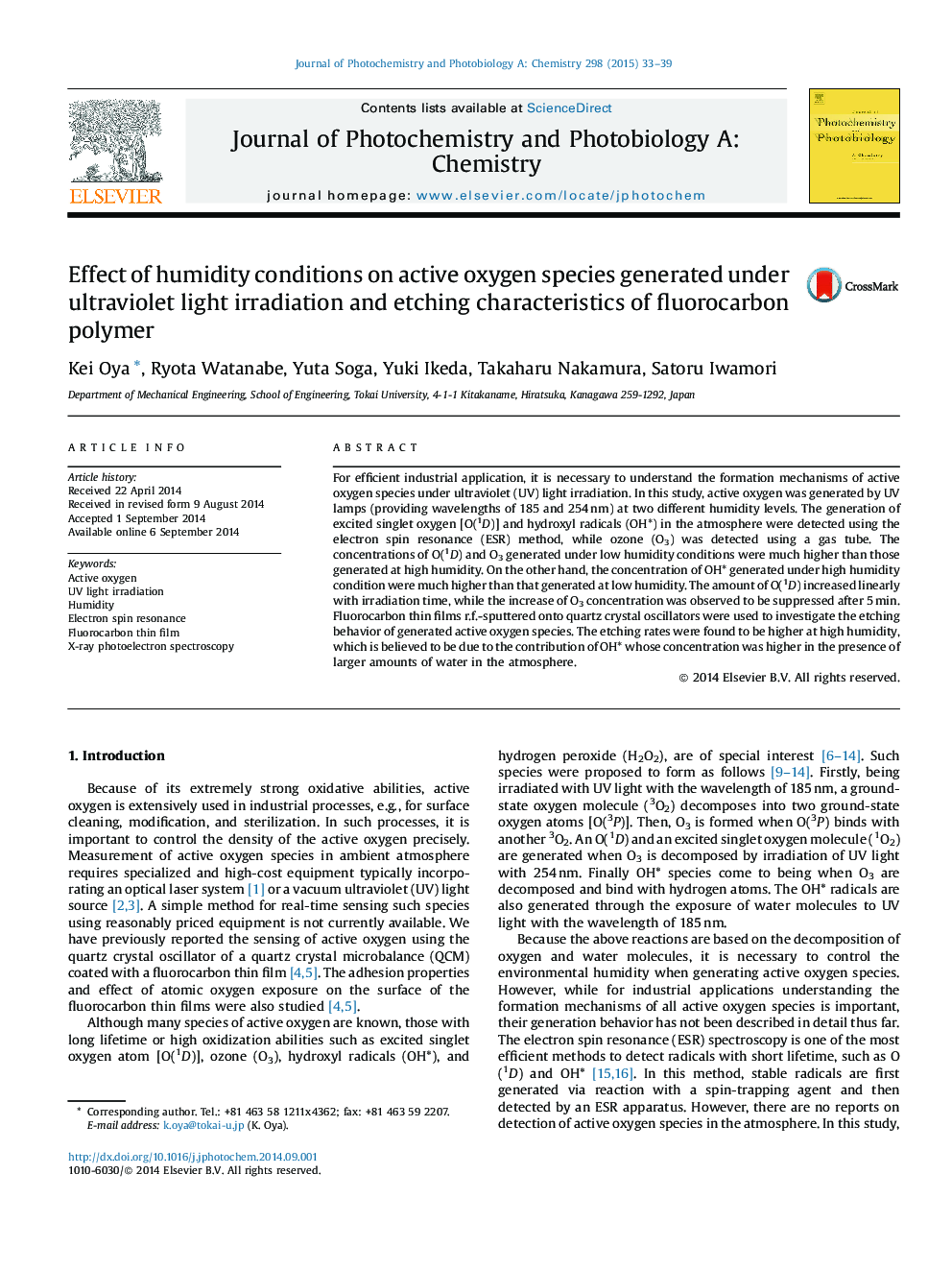| Article ID | Journal | Published Year | Pages | File Type |
|---|---|---|---|---|
| 25870 | Journal of Photochemistry and Photobiology A: Chemistry | 2015 | 7 Pages |
•Active oxygen was generated using UV light under low/high humidity conditions.•O(1D) and OH* were detected in the atmosphere using the ESR method.•Generated active oxygen species depend on environment humidity.•Etching rates of fluorocarbon thin films depend on environment humidity.
For efficient industrial application, it is necessary to understand the formation mechanisms of active oxygen species under ultraviolet (UV) light irradiation. In this study, active oxygen was generated by UV lamps (providing wavelengths of 185 and 254 nm) at two different humidity levels. The generation of excited singlet oxygen [O(1D)] and hydroxyl radicals (OH*) in the atmosphere were detected using the electron spin resonance (ESR) method, while ozone (O3) was detected using a gas tube. The concentrations of O(1D) and O3 generated under low humidity conditions were much higher than those generated at high humidity. On the other hand, the concentration of OH* generated under high humidity condition were much higher than that generated at low humidity. The amount of O(1D) increased linearly with irradiation time, while the increase of O3 concentration was observed to be suppressed after 5 min. Fluorocarbon thin films r.f.-sputtered onto quartz crystal oscillators were used to investigate the etching behavior of generated active oxygen species. The etching rates were found to be higher at high humidity, which is believed to be due to the contribution of OH* whose concentration was higher in the presence of larger amounts of water in the atmosphere.
Graphical abstractFigure optionsDownload full-size imageDownload as PowerPoint slide
